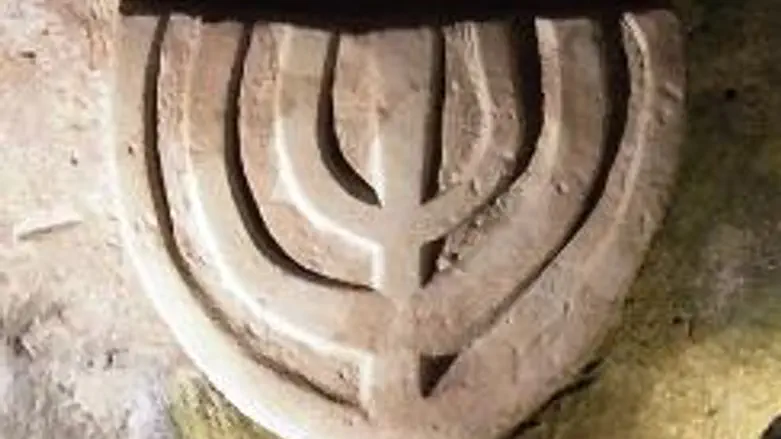
Knesset Speaker Reuven Rivlin unveiled a huge ancient relief depicting a seven branched menorah at Beit Shearim in the Galilee Tuesday. The menorah, which is 1.90 m. (75”) high, is one of the major tourist attractions at the renovated ancient burial cave site.
The burial caves were discovered decades ago but their recent renovation took place largely thanks to Rivlin's initiative. In 2004, during his first term as Knesset Speaker, Rivlin visited the site and was stirred by the site of the numerous depictions of the menorah, which is the modern State of Israel's symbol as well.
He took action to make sure that the site received special preference and that funds were allocated to its restoration and preservation. A team, which included restoration expert Jacques Neger and architect Ram Shoef, got rid of roots that had invaded the caves and restored the wall carvings, and the renewed site was opened to tourists.
Rivlin, who recently became Knesset Speaker for a second time, was honored with the ceremonial unveiling of the most impressive menorah at the site, which has a powerful and almost modernistic look.
The Beit Shearim National Park is located near Tivon, just east of Haifa. It contains the remains of a Jewish community which became the seat of the Sanhedrin – the Jewish High Court and legislative body – after the destruction of the Second Temple. Beit Shearim was the burial place of Rabbi Yehudah HaNassi, the editor of the Mishnah.
At the ceremony, Rivlin spoke of the connection between the Sanhedrin and today's Knesset. “The establishment of the State, Zionism, the revival of the Hebrew language and Israeli sovereignty – all these are, in my eyes, the natural continuation of what began here, at Beit Shearim,” he said.
Photos show parts of the burial caves before and after restoration (Israel Antiquities Authority).



